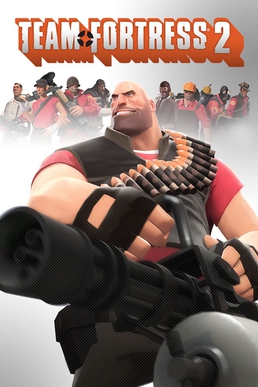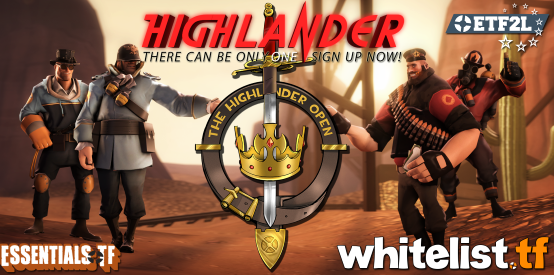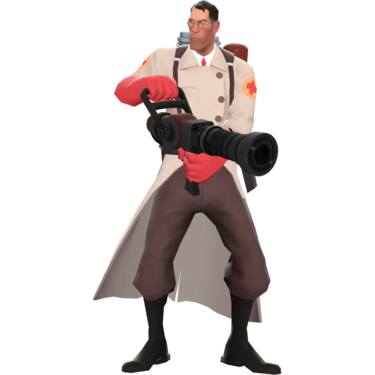Team Fortress 2 Competitive Whitelist: A Balancing Act The early days of competitive Team Fortress 2 were, to put it mildly, a Wild West.

The early days of competitive Team Fortress 2 were, to put it mildly, a Wild West. Before formalized rulesets and weapon restrictions, anything was fair game. This led to some incredibly creative strategies, but also to situations where certain weapons became so dominant that they warped the entire meta. Looking back, it's fascinating to see how the community, through leagues like ETF2L, stepped in to create a more balanced and engaging competitive experience. As someone who spent countless hours in 6v6 matches back then, and now works as a game balance designer, I can appreciate the delicate dance between player agency, weapon viability, and overall game health. The evolution of the Team Fortress 2 competitive whitelist is a valuable lesson in how community-driven rules can shape a game, and how those rules can eventually influence the developers themselves.
The Untamed Frontier: Early Competitive TF2
In the beginning, there were no rules, or at least, very few. Competitive TF2 was a free-for-all, and players quickly discovered the most efficient ways to win, regardless of how fun or balanced they were. This "anything goes" mentality led to some truly bizarre team compositions and strategies that, while novel, often boiled down to exploiting a few overpowered weapons. It was a time of experimentation, but also one where the long-term health of the competitive scene was at risk. Competitive TF2 weapon balancing was, at this point, mostly in the hands of the players themselves as they tried to adapt to the ever-shifting landscape.
Case Study 1: The Vita-Saw – Medic Mayhem
The Vita-Saw. Just hearing the name probably sends shivers down the spines of old-school competitive Medics. Before it was nerfed, this weapon allowed Medics to retain up to 20% of their Ubercharge on death. This was an extremely powerful advantage, essentially guaranteeing that a team would have Ubercharge advantage in almost every fight.
What followed was predictable: every Medic ran the Vita-Saw. Fights became visual nightmares. Imagine six Medics on each team, all constantly dying and respawning, all contributing to a symphony of particle effects and screen shake. The visual clutter made it incredibly difficult to track what was happening, and it was downright painful to watch, let alone play. For spectators, following the action was a confusing mess. It became difficult to see what was going on during critical pushes. It was a clear case of a single weapon dominating the meta and actively detracting from the overall experience. The Vita-Saw ban TF2 became inevitable.
Case Study 2: The Sandman – Stun-Lock City
The Sandman, with its long-range stun mechanic, presented a different kind of problem. While not as visually overwhelming as the Vita-Saw, it had a profound impact on gameplay. Coordinated teams could use the Sandman to stun key targets, like Medics or Demomen, making them easy pickings for Snipers or other damage dealers.
The issue wasn't necessarily the stun itself, but rather its reliability and range. A skilled Scout could consistently land Sandman stuns from across the map, completely shutting down enemy players before they even had a chance to react. This effectively eliminated any counterplay and severely limited the viability of other Scout unlocks. You'd see coordinated Sandman stuns leading to quick Sniper picks in almost every match. The Sandman nerf competitive TF2 was a direct response to its oppressive presence in the meta. The glowing trail of the baseball became a signal of impending doom for anyone caught in its path, and the visual stun effects were a constant reminder of the weapon's control over the battlefield.
Case Study 3: The Crit-a-Cola – Burst Damage Bonanza
The Crit-a-Cola was another contentious weapon, particularly in the context of aggressive Scout playstyles. This drink granted the Scout mini-crits for a short duration, but also made them more vulnerable to damage. The idea was a high-risk, high-reward option for players who wanted to aggressively flank and burst down key targets.
However, the "risk" part of the equation often felt negligible. The burst damage potential was so high that skilled Scouts could easily eliminate opponents before the increased vulnerability became a factor. This led to a meta where the Crit-a-Cola was almost mandatory for aggressive Scouts, further limiting the diversity of viable playstyles. Seeing a Scout aggressively flanking with the Crit-a-Cola activated was a visually intense experience, the character model's unique animation paired with noticeable particle effects signaled incoming damage. The Crit-a-Cola exploit TF2 revolved around its imbalance between risk and reward, pushing competitive play towards burst damage strategies.
The Rise of the Whitelist: ETF2L and Community-Driven Balance
As these issues became increasingly apparent, the community stepped in. Leagues like ETF2L recognized that certain weapons were detrimental to the competitive scene and began implementing weapon whitelists.
The ETF2L ruleset impact was significant. By banning weapons like the Vita-Saw, Sandman, and eventually the Crit-a-Cola, they created a more level playing field and encouraged greater diversity in weapon choices and strategies. The rationale was simple: promote fun, engaging, and competitive gameplay. The Team Fortress 2 competitive whitelist became a crucial tool for maintaining balance and ensuring that the meta didn't devolve into a predictable, homogenous mess.
The screenshot above, from the ETF2L website, showcases the result of this community effort to balance the game.
Impact on Valve's Perception
Did these community-driven rules affect Valve's perception of balance? Absolutely. While Valve has always been somewhat hands-off with TF2's competitive scene, the widespread adoption of whitelists by community leagues couldn't be ignored. It demonstrated a clear consensus among competitive players about which weapons were problematic. This, in turn, likely influenced Valve's eventual balance changes, even if they didn't directly mirror the ETF2L whitelist. The community had essentially provided a testing ground for potential balance adjustments, and Valve could observe the results before implementing changes on a global scale. The community had a role in helping with Community driven TF2 balance.
Lessons Learned: Shaping Modern Game Design
Looking back, the TF2 competitive whitelist evolution offers several valuable lessons for game designers.
- Visual Clarity is Key: The Vita-Saw's visual chaos highlighted the importance of ensuring that gameplay remains readable, even in the heat of battle. Overly intrusive particle effects or screen shake can detract from the experience and make it difficult for players to track what's happening.
- Avoid Mandatory Usage: Weapons that become so powerful that they are essentially mandatory limit player choice and stifle strategic diversity. Game designers should strive to create a balanced ecosystem where multiple playstyles and weapon loadouts are viable.
- Community Involvement is Invaluable: The TF2 community's proactive approach to balancing the game demonstrates the power of player feedback. Engaging with the community, listening to their concerns, and incorporating their suggestions can lead to a more balanced and engaging game.
These lessons, learned from the trenches of competitive TF2, continue to inform my approach to game balance design today. It's a reminder that creating a great game is not just about designing cool mechanics, but also about fostering a healthy and engaging community, and creating a game that is both fun to play and fun to watch. The screenshot above serves as a stark reminder of what could happen without proper balancing.



